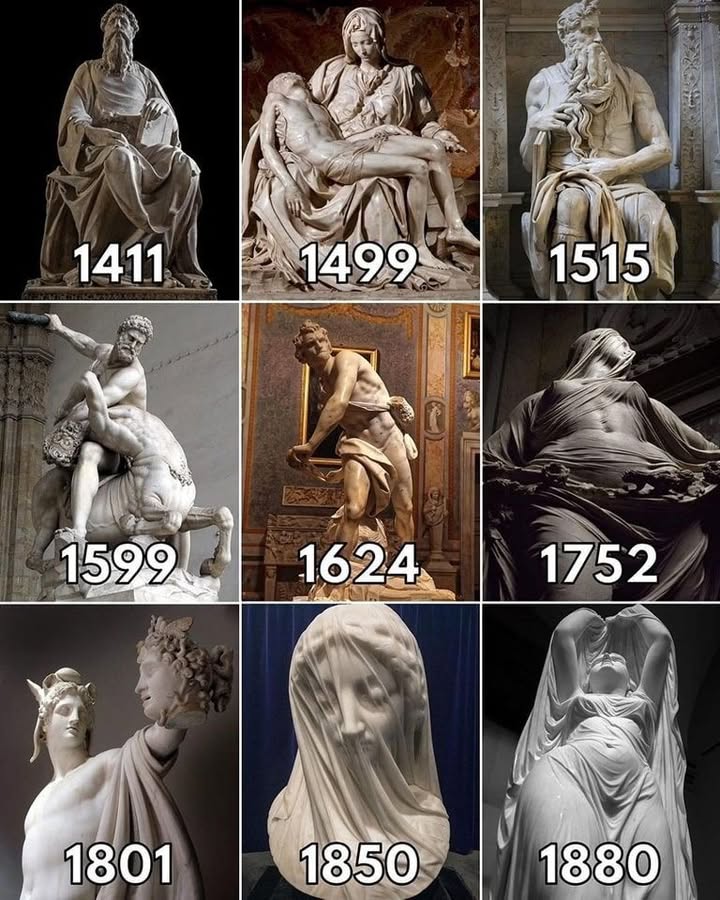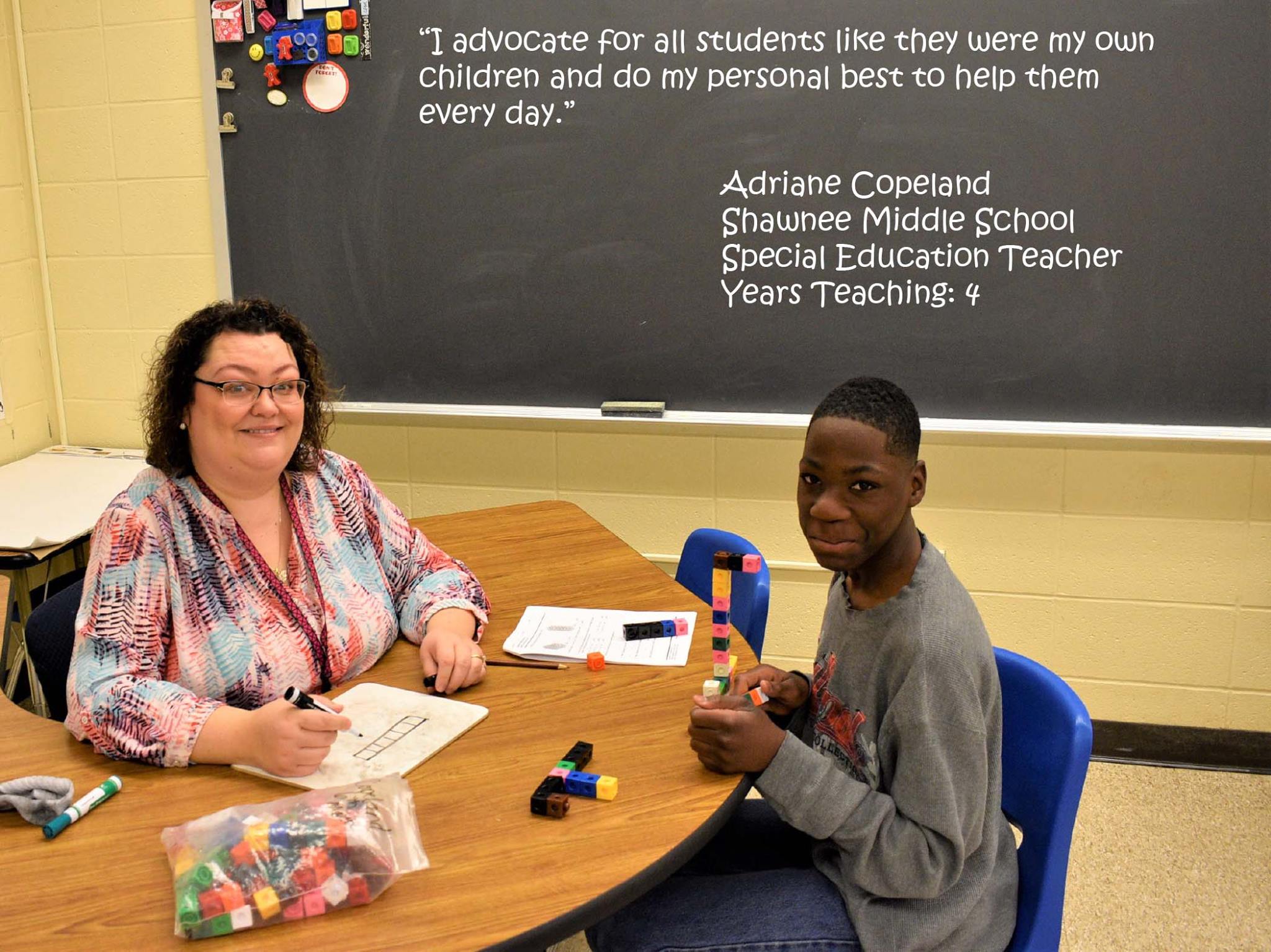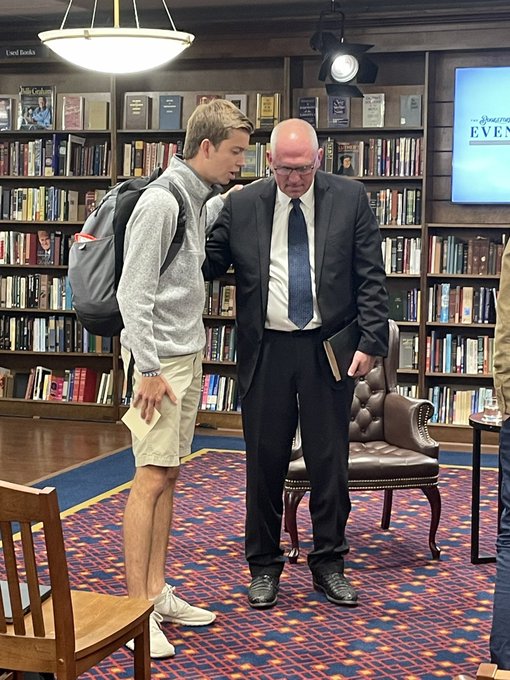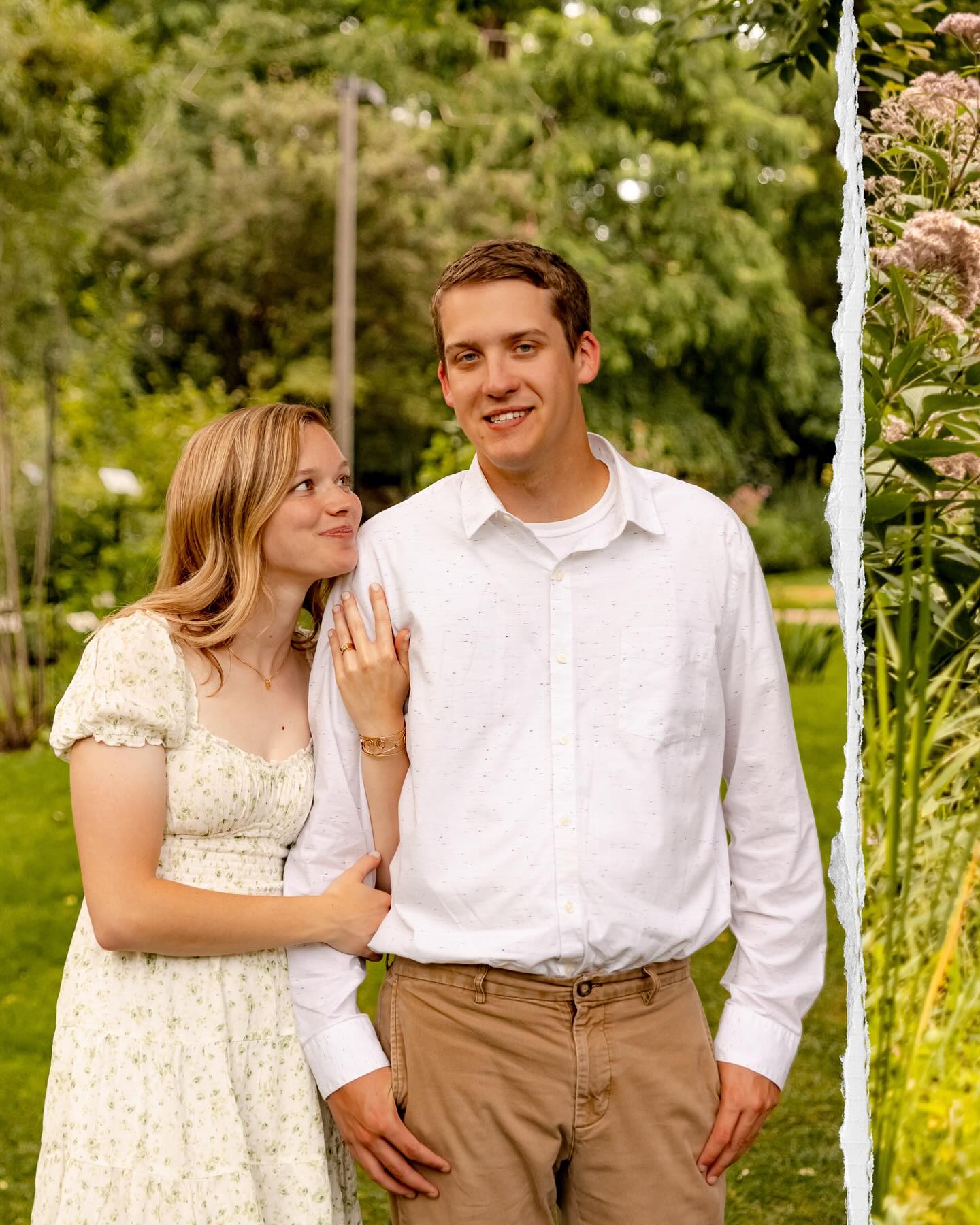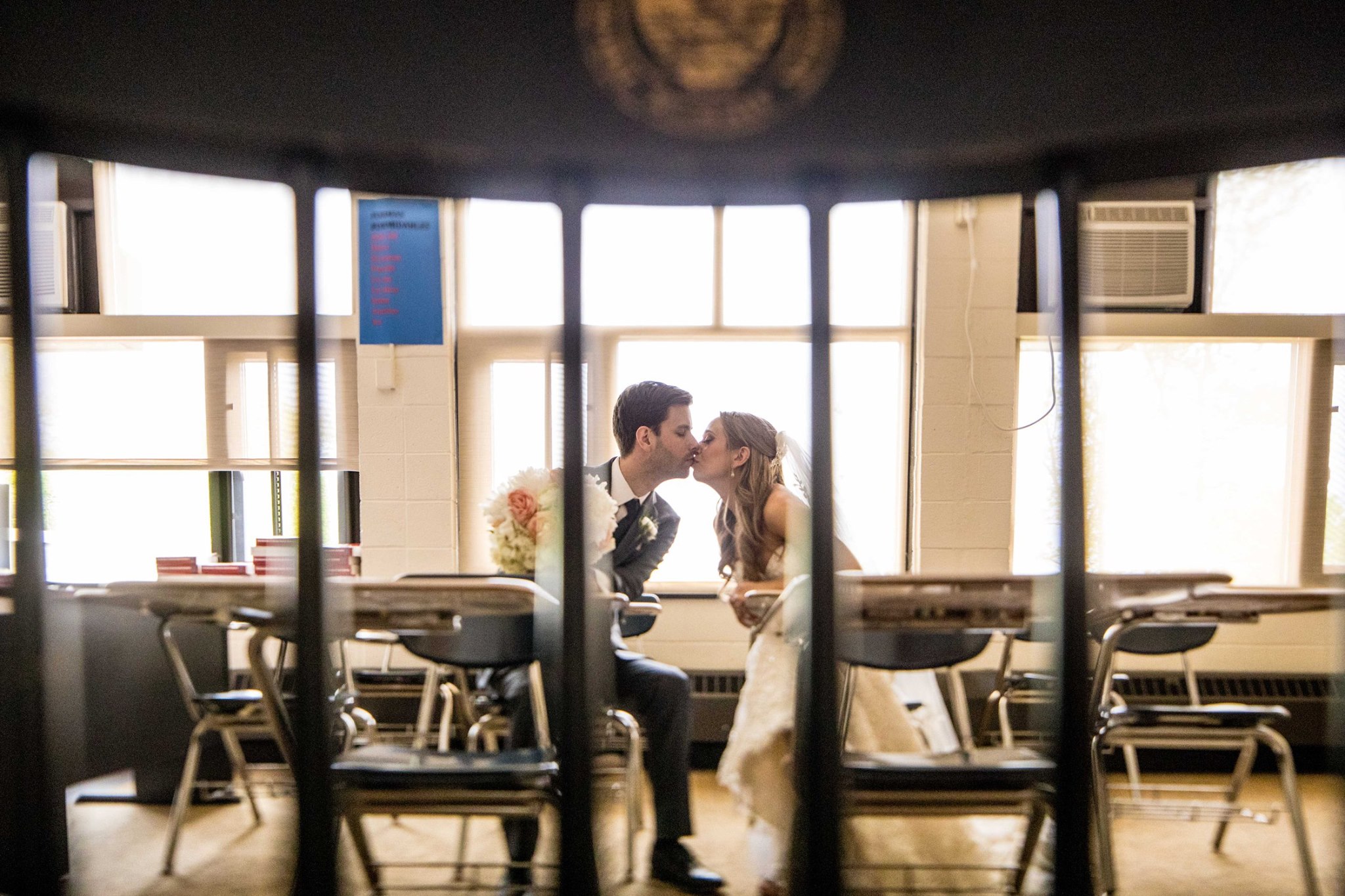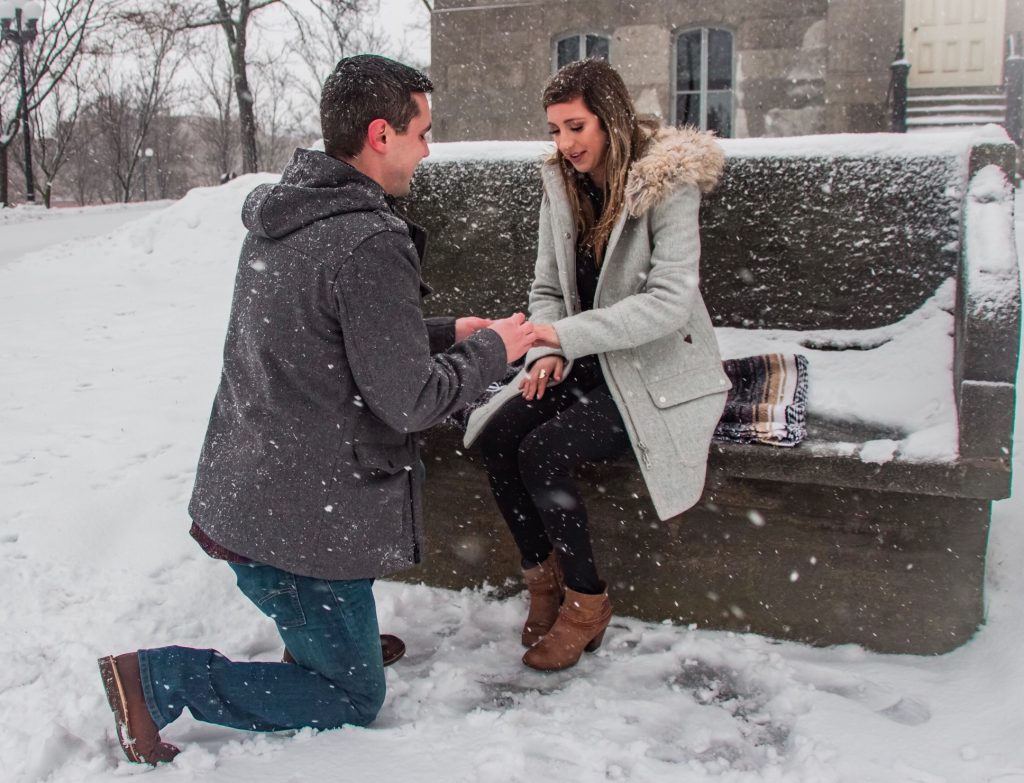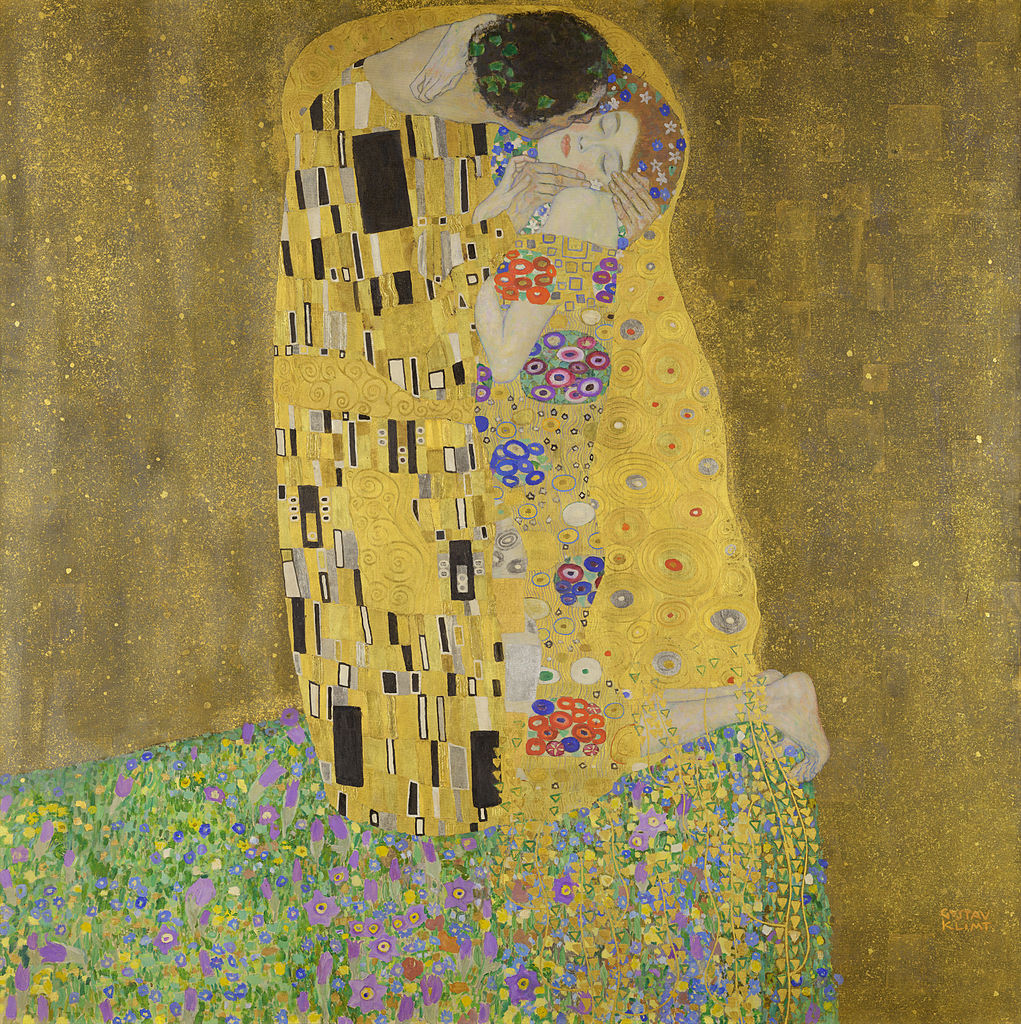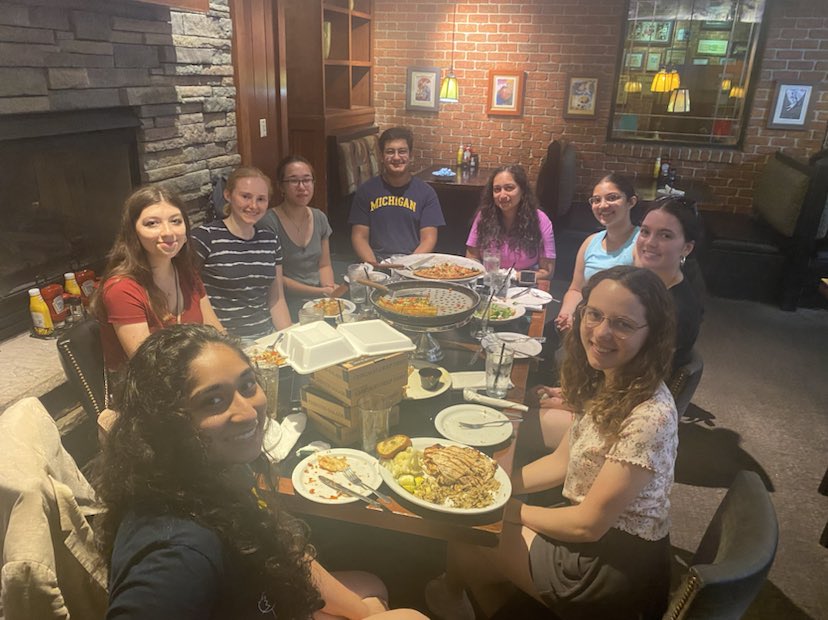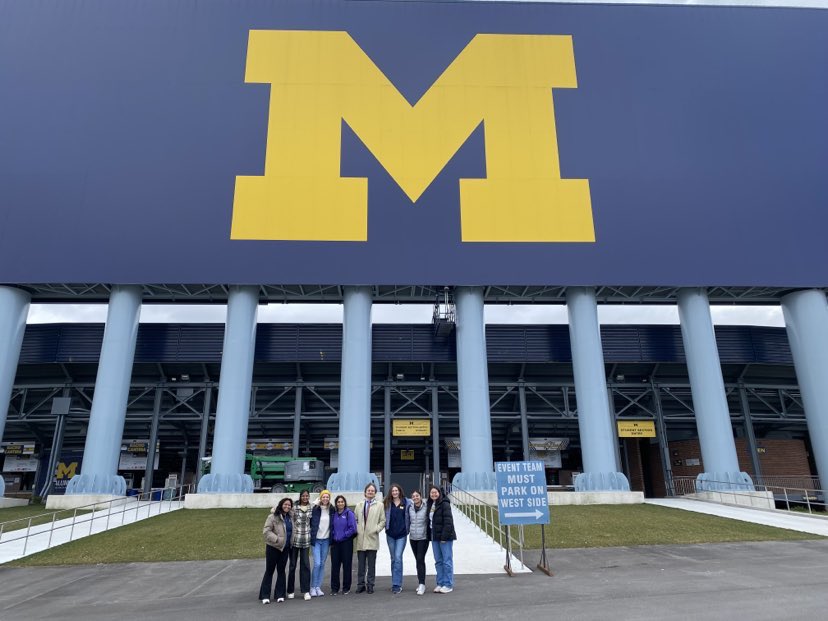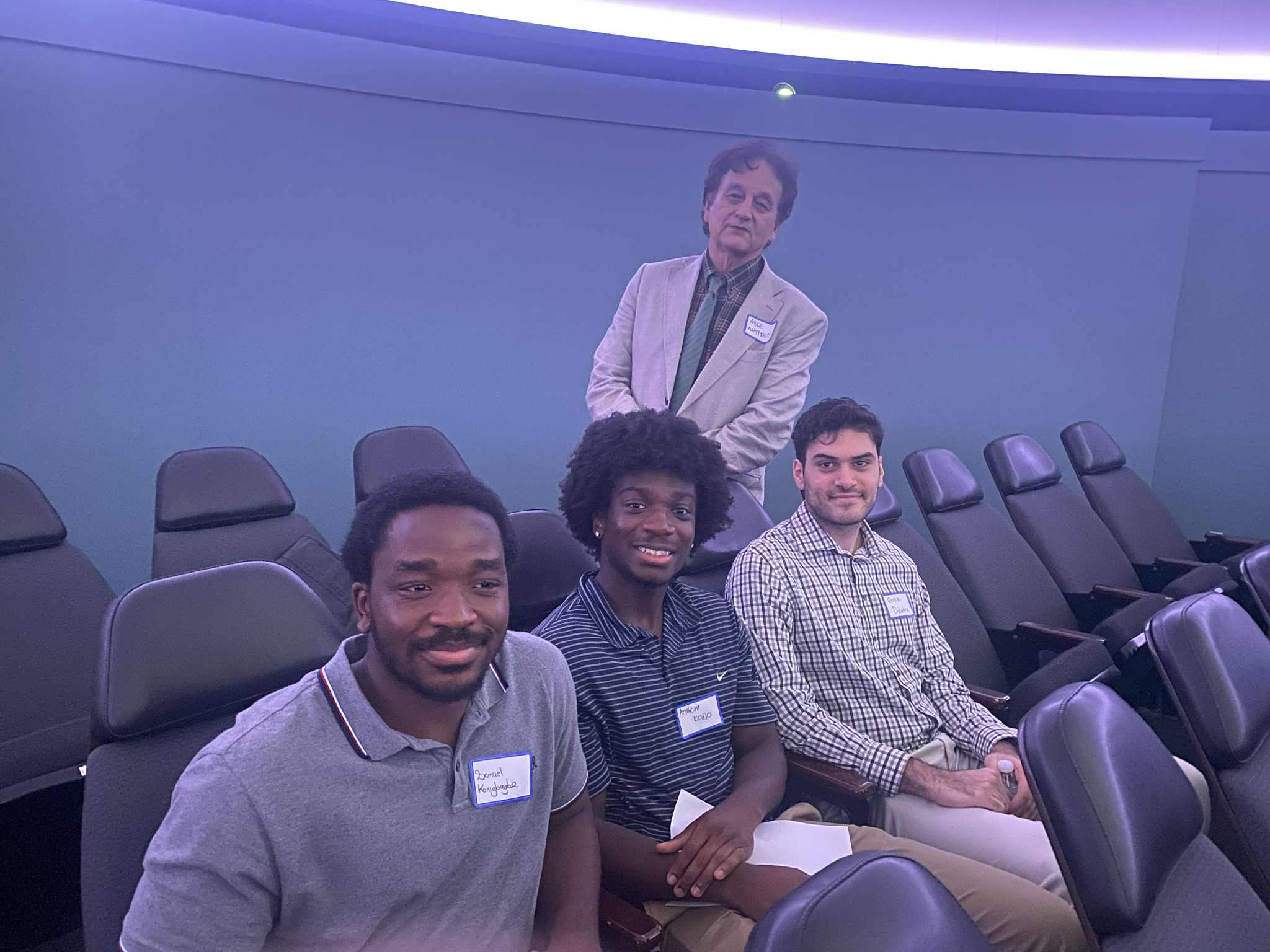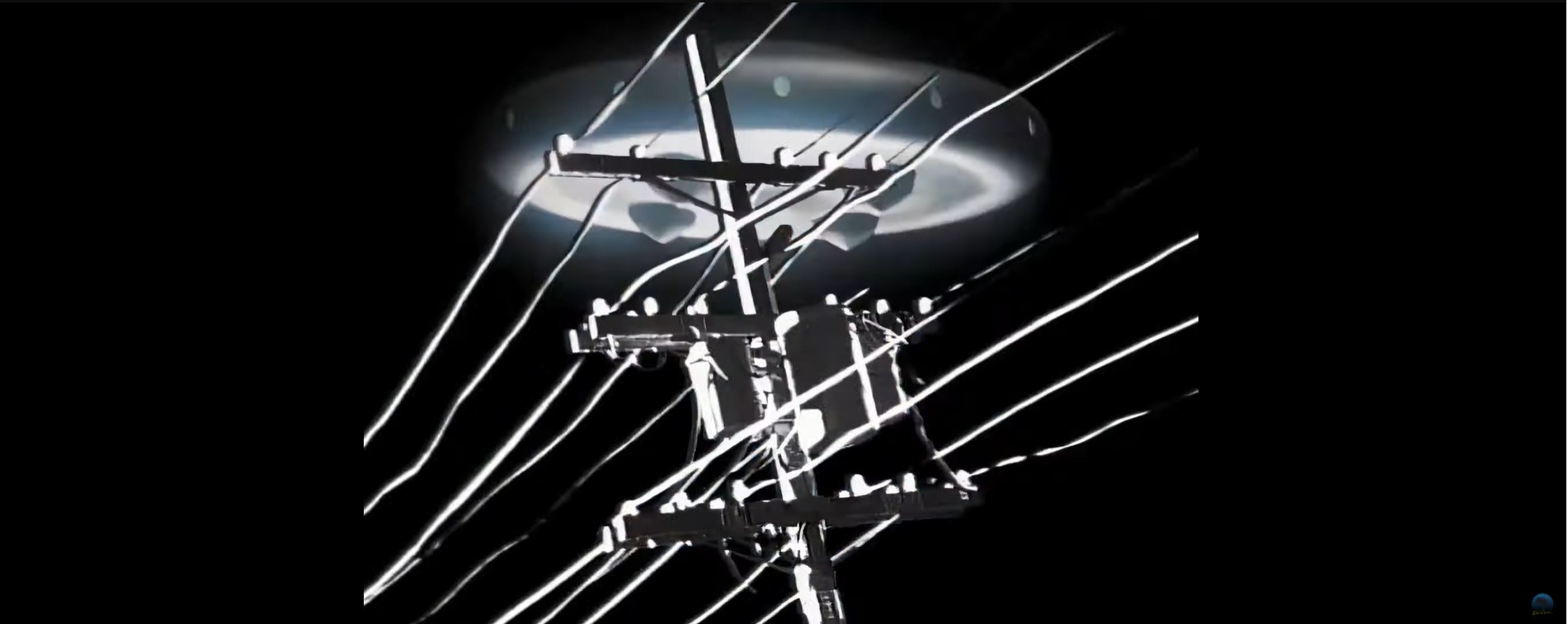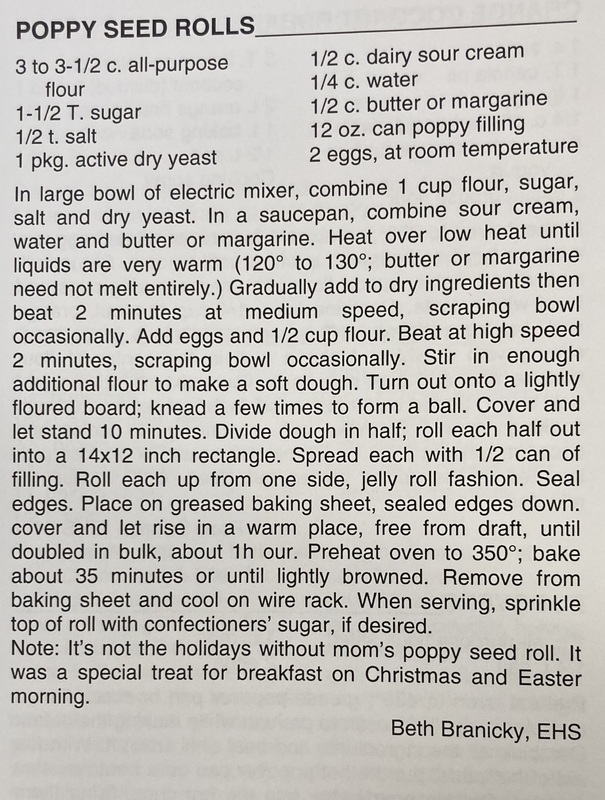Author Archives: mike@standardsmichigan.com
- Home
- Articles posted by mike@standardsmichigan.com

Best Coffee Spots in Cardiff
Standards Wales | British Standards Institution | ISO Coffee Standards
Annual Report and Financial Statements 2024
Take the next step in your career and join one of the UK’s most innovative and successful universities.
💷 Competitive salaries
🧳 Generous leave entitlement
🏠 Hybrid working
🏦 Staff pension
📚 Development opportunities. pic.twitter.com/ePIomFWxS6— Cardiff University (@cardiffuni) October 3, 2024
Our Interior Design students have developed concepts for a key area of a new building on the University’s Treforest Campus. 🧵https://t.co/OXh5BcBSdC pic.twitter.com/KvGd0gjLtT
— University of South Wales (@UniSouthWales) April 8, 2025
Traditional Irish Soda Bread
Ballymaloe Cookery School is situated on a 100-acre organic farm in County Kerry. It produces the freshest vegetables, fruit, meat and dairy products, all of which are used in the kitchen every day. We teach a diverse range of cooking styles but the fundamental message we pass on to our students is the importance of putting time and effort into sourcing the highest-quality ingredients.
Kerry College of Further Education
Quadrivium: Winter
Michigan State University Christmas Tree Research
ANSI Standards Action December 12, 2025 | NFPA Standards Council Meeting December 3
Secretary Linda McMahon: Education National Emergency
Inside the tiny Highland school with just two pupils | BBC Scotland News
Intercollegiate Studies Institute: Immigration and the State of Cheating in Universities
Trending | Engagements, Weddings & Births | Sport News | Carillons
100 years ago, the Supreme Court made it clear in Pierce v. Society of Sisters: raising children is the responsibility of parents, not the government.
100 years later, the Trump Administration remains committed to protecting parental rights. pic.twitter.com/yduXdLShty
— Secretary Linda McMahon (@EDSecMcMahon) June 1, 2025
“…O chestnut tree;, great rooted blossomer,
Are you the leaf, the blossom or the bold?
O body swayed to music, O brightening glance,
How can we know the dancer from the dance?”
— Among Schoolchildren, 1933 William Butler Yeats
We sweep through the world’s three major time zones; updating our understanding of the literature at the technical foundation of education community safety and sustainability in those time zones 24 times per day. We generally eschew “over-coding” web pages to sustain speed, revision cadence and richness of content as peak priority. We do not provide a search facility because of copyrights of publishers and time sensitivity of almost everything we do.
Readings:
“The Advancement of Learning” Francis Bacon (1605)
“The Allegory of the Cave” 380 BCE | Plato’s Republic, Book VII
Thucydides: Pericles’ Funeral Oration
IEEE Access: Advanced Deep Learning Models for 6G: Overview, Opportunities, and Challenges | Xidian University
“Albion: The Origins of the English Imagination” (2002) Peter Ackroyd
“Bitcoin: A Peer-to-Peer Electronic Cash System” Satoshi Nakamoto
“Extraordinary Popular Delusions and the Madness of Crowds” (1841) | Charles Mackay
Cognitive Science: An Introduction to the Study of Mind
“Kant’s Categorical Imperative” | Hillsdale College Introduction to Western Philosophy
“The Natural History of Stupidity” (1959) Paul Tabori
“The College Idea: Andrew Delbanco” Lapham’s Quarterly
Distributed Representations of Words and Phrases and their Compositionality | Google, Inc. et, al
Our daily colloquia are typically doing sessions; with non-USA titles receiving priority until 16:00 UTC and all other titles thereafter. We assume policy objectives are established (Safer-Simpler-Lower-Cost, Longer-Lasting). Because we necessarily get into the weeds, and because much of the content is time-sensitive and copyright protected, we usually schedule a separate time slot to hammer on technical specifics so that our response to consultations are meaningful and contribute to the goals of the standards developing organization and to the goals of stewards of education community real assets — typically the largest real asset owned by any US state and about 50 percent of its annual budget.
![]()
1. Leviathan. We track noteworthy legislative proposals in the United States 118th Congress. Not many deal specifically with education community real assets since the relevant legislation is already under administrative control of various Executive Branch Departments such as the Department of Education.
We do not advocate in legislative activity at any level. We respond to public consultations but there it ends.
We track federal legislative action because it provides a stroboscopic view of the moment — the “national conversation”– in communities that are simultaneously a business and a culture. Even though more than 90 percent of such proposals are at the mercy of the party leadership the process does enlighten the strengths and weakness of a governance system run entirely through the counties on the periphery of Washington D.C. It is impossible to solve technical problems in facilities without sensitivity to the zietgeist that has accelerated in education communities everywhere.
Michigan can 100% water and feed itself. Agriculture is its second-largest industry.
2. National Institute of Standards and Technology (NIST)
3. American National Standards Institute (ANSI)
4. Fast Forward
5. Rewind
6. Corrigenda
“The world will never starve for want of wonders;
but only for want of wonder.”
Graduation, Dating, Engagements, Weddings, Births & Obituaries
Merry Christmas from the Roundtree family! ❤️🎄 pic.twitter.com/IXPkwOpTFG
— Roy Roundtree (@WRTreezy) December 25, 2025
In non soccer, non portal, non athletic news, our family just grew by one 😀 we gained a future son in law!!! So happy for Madison and Dylan. #weddingplans pic.twitter.com/3DNx0tNr5D
— Darren Ambrose (@Darren__Ambrose) December 24, 2025
Congrats to my son for graduating with Honors from Eastern Michigan – don’t blink time flies – so so proud of what he’s accomplished & love him to pieces 💙🎉🥳 pic.twitter.com/qAj2ndRVwA
— M (@bakingmom14) December 14, 2025
We need a reality dating show called “Average SEC Couples” that’s just 15 Average Joe’s from the South wooing 15 gorgeous women with generational wealth. pic.twitter.com/hhNGYUPw3S
— College Sports Only (@CSOonX) October 15, 2025
She didn’t even look at the ring… Brother won at life.✨
— Kevin W. (@Brink_Thinker) December 6, 2025
This boy has the best friend in the world 😊 pic.twitter.com/8DkaUfWdcQ
— This Account Makes You Happy (@FeelYouHappy) December 1, 2025
Entering December a wife-to-be. ♥️ pic.twitter.com/zdlVY9nZSS
— Miss Gauld (@miss_gauld) November 30, 2025
I got to go to church AND my little baby bump is bumping today 🤎 pic.twitter.com/zokhXkn7cf
— mrs. dobbins ☕️🪶 (@mrsdobbins_) November 30, 2025
Congratulations on your baptism, Rosalie Diane! pic.twitter.com/kmyLinIUwj
— St. Joseph Shrine (@StJosephShrineD) November 30, 2025
Since I’m making happy announcements, Anne and I are expecting our first grandchild (a grandson we’re told) in February. We’re very proud of and happy for our oldest son Aedan and his wife Addy. Thanks be to God! pic.twitter.com/3xFXGYaes0
— Matt Kennedy (@lambeth981) November 24, 2025
Ben Marrow asked Emma, our first, to marry him tonight and she said yes. pic.twitter.com/qO63wJf1hp
— Matt Kennedy (@lambeth981) November 24, 2025
1 day in and our honeymoon has been amazing.
Listen young men, saving yourself is so worth it! When 2 equally yoked believers of Christ become one it is the most beautiful thing!
Do your best to stay away from worldly desires. Gods rule book is the best outline! pic.twitter.com/4HQvDVB629
— Bo (@dittletv) November 23, 2025
💙Last middle school dance💙
Time is flying, but I’ve loved every moment of this phase — shopping for his unique style, the cologne hunts, the late-night talks, and watching him chase what he loves. Keep being authentically you, GT!💥 pic.twitter.com/glH8AHyid4— Taylor Williams (@twilliams12711) November 2, 2025
Love this! pic.twitter.com/zUfYeeS0lR
— Hayes Holly (@HayesHolly2) November 2, 2025
Your 2025 Homecoming Parade float winner! Congratulations to Alpha Gamma Rho & Delta Phi Epsilon 💜#TarletonState #BleedPurple #TarletonHomecoming pic.twitter.com/TsEKa085IM
— Tarleton State University (@TarletonState) October 18, 2025
Ladies and gentlemen… your 2025 Springfield Homecoming Royalty, King and Queen, Logan Goodrick and Emma Scheuer 👑 pic.twitter.com/r0t1Hr2lXw
— Springfield School District (@AllThingsBluSF) October 18, 2025
Another look at your 2025 Homecoming Court! pic.twitter.com/pkA7KXtYl2
— Maine-Endwell (@MECSDSpartans) October 18, 2025
Senior #hoco2025 💜 pic.twitter.com/grlzcSK7Tr
— Sloane Phillips (@SloaneJPhillips) October 13, 2025
Bulldog win in San Diego and my girl Madden is 3 months. A great weekend of football and family! pic.twitter.com/KgyZR9A0P4
— Kyle Kempt (@CoachKyleKempt) October 12, 2025
12 years ago, she drove 3.5 hrs without hesitation to save me from deep in the trenches of postpartum.
Last night, we got to celebrate this beautiful human. Baby H hit the mama jackpot. 💛 pic.twitter.com/ef6mn2RiI3
— Melissa Evans (@mrs_melevans) October 13, 2025
Our family grew by one this last week.
God is good 🙌 pic.twitter.com/ZlyMuCTO0e— Oliver – Blue Line Futures (@OliverSloup) October 3, 2025
Homecoming for my girls… time flies pic.twitter.com/2F5n36OvxR
— Lawrence Bubeck (@BubeckLawrence) October 4, 2025
Senior year prom! We all had such a great time. pic.twitter.com/v7e0yRdHsg
— Morgan Maske (@MorganMaske2026) October 5, 2025
Hoco ‘25 with the BEST! 💚🖤@MyersParkHS #JuniorSeason pic.twitter.com/VTshvISaUY
— Regan Godman ‘27 (@Regan55Godman) October 5, 2025
One week postpartum with the sweetest baby ever. I am blessed beyond measure to have had my 5th successful home birth and a very smooth recovery. God is so good! pic.twitter.com/bWBqAtOUkj
— Jenny (@rosary2battle) September 20, 2025
A South African man who recently picked up an abandoned baby in Mpumalanga suburb of Emalahleni is now applying for court permission to adopt the boy and get him a birth certificate
The man has two daughters and is now happy to have a boy pic.twitter.com/z9kPW3s1w5
— African Hub (@AfricanHub_) September 14, 2025
Top 10 proposal for sure pic.twitter.com/u8HZdOhwYy
— Dudes Posting Their W’s (@DudespostingWs) September 19, 2025
t5rtrtr
Ten years after our wedding, our triplets have finally arrived… Thank you to everyone who sent us congratulations. These are our most precious treasures. #fblifestyle pic.twitter.com/AXKOj7vL7Q
— Maria Rose 🇱🇷 (@fuzia09) September 16, 2025
What a cute baby announcement! 🥰
🎥: dakotabaker84 on TT. pic.twitter.com/94cTKNLXr9
— Positive Side of 𝕏 (@positivesideofx) September 21, 2025
Yesterday was a dream.
So happy to officially be Mrs. Dasovic! pic.twitter.com/pwR41ZTq9V
— olivia dasovic (@oliviadasovic) September 7, 2025
Congrats, just have someone to yell what too. #farmlife #farmlifebestlife pic.twitter.com/k58Fd35VBT
— Natalie Cooper Kovarik (@natalie_kovarik) August 30, 2025
My mom got us a gift before we got married of a framed photo the reads
“If you want to go fast, go alone. If you want to go far, go together.”
We have been doing our best to follow that advice for the last 13 years
Happy Anniversary to my forever wife pic.twitter.com/jdySWrHR8r
— Andrew Bragg (@AndrewBragg5555) August 31, 2025
“Beauty is needed only at a wedding, the mind – every day.”
Tatar proverb
🪡🧶
Good night pic.twitter.com/7Z5iLeF0b2— Cursive (@Pergament_F) April 7, 2025
No longer MissBuryTeach… but Mrs Jackson-Bury Teach? pic.twitter.com/I86fJmupet
— Miss Bury ⭐ (@MissBuryTeach) August 2, 2025
Some personal news:
Time to get married, have some Jewish babies, and raise them to love America. pic.twitter.com/Sqgu6g9PYh
— Jesse Arm (@Jesse_Leg) July 18, 2025
The body of 8-year-old Mystic camper Virginia Hollis was found along the Guadalupe River earlier this week, more than a week after the July 4 floods in Texas.
Yesterday, this angel’s favorite horse followed her casket through the streets to bid her farewell. 😭 pic.twitter.com/T8f8O6n4q3
— Marina Medvin 🇺🇸 (@MarinaMedvin) July 18, 2025
Miss Italia Finals 🇮🇹 pic.twitter.com/3XgPWvZ6Lo
— TastefulLindy (@LindyTasteful) July 19, 2025
Remember what they took away from us pic.twitter.com/Dnzzk1Quzc
— ☩ 𝕁𝕄𝕋 ☩ (@SecretFire79) July 12, 2025
After 15 years of marriage, the first child is actually twins! 🥳Maybe no one will say it, but we want to share this joy anyway. 🌹 pic.twitter.com/T60zPJZ0tT
— Sania Obaid 🇺🇲 (@afra_art56) July 12, 2025
I’m in tears. Watch how respectful every firefighter is greeting Trump, taking their hat off for Melania
America has a True Leader who cares about each and every American again. These Firefighters feel it
Mainstream media will never show this pic.twitter.com/KxWNrry7dC
— MAGA Voice (@MAGAVoice) July 11, 2025
Women are the same at all ages😂 pic.twitter.com/x4Y95x7xQq
— The King (@xxxxTheKing) July 12, 2025
Taking a 12 hour sabbatical from the portal to get this young lady married tonight! pic.twitter.com/GXLzZWmdKA
— Ryan Gaines (@ryankgaines) June 28, 2025
He was with me almost every day for 12 years. The best living creature I’ve ever known including humans.
He protected children and loved his job out here.
I hope I can be half the man this dog was to our world. I buried him last evening in his beloved woods.Warrior
GUS🪓 pic.twitter.com/011cffq1xS
— Cattleman🪓 (@cattleguy92) June 29, 2025
Congratulations to my brother on graduating high school.
I can’t wait to see all the amazing things you accomplish at American University. ❤️ pic.twitter.com/UZJxVP56ro
— Isabella Maria DeLuca (@IsabellaMDeLuca) June 29, 2025
When your daughter wants to play catch instead of a first dance after she says I do. 🥺 pic.twitter.com/yjnobxxfcn
— Ryan Gaines (@ryankgaines) June 29, 2025
Married Friday, planting wheat on Monday! pic.twitter.com/GKqXA7SlMP
— FarmerDan (@farmerdan97) September 27, 2021
Enjoying every moment with my boyfriend 💕 pic.twitter.com/cKMsLIFgqm
— Ms. Jachymiak (@MsJachymiak) June 15, 2025
A heartfelt surprise for her best friend on graduation day.. She didn’t expect it because they hadn’t seen each other in so long, ever since her friend moved to another citypic.twitter.com/3pxswYFVNt
— Wolf of X (@tradingMaxiSL) June 7, 2025
Non-food post: It’s Prom Season! Our oldest daughter is off to McGill University this Fall. Two out of the house, two still at home.
Love ya, sweetie. pic.twitter.com/hwvQ5svT5Z
— The Food Professor (@FoodProfessor) June 8, 2025
Norman ROCKWELL • American 1894-1978
“𝖢𝗈𝗎𝗋𝗍𝗂𝗇𝗀 𝖢𝗈𝗎𝗉𝗅𝖾 𝗎𝗇𝖽𝖾𝗋 𝗍𝗁𝖾 𝖢𝗅𝗈𝖼𝗄 𝖺𝗍 𝖬𝗂𝖽𝗇𝗂𝗀𝗁𝗍”@NRockwellMuseumhttps://t.co/eccEsvTUsR pic.twitter.com/dkSIjuJu2N— Standards Michigan (@StandardsMich) March 8, 2025
My best experiment yet ❤️ pic.twitter.com/ymxggYZmTv
— César de la Fuente (@delafuentelab) April 9, 2025
It’s 6:53pm and I wish I had a little baby sleeping on my chest right now.
One day God willing. pic.twitter.com/Zbg0xfbDOJ
— 𝐿𝑜𝓊𝒾𝓈𝑒 (@crunchycozygirl) April 11, 2025
The Catholic Church has a new member today 🤍 pic.twitter.com/MviMoRMEUJ
— Kendall 🌷 (@kciolane) April 12, 2025
From couple matching to couple chief-ing!!!thrilled and honored to serve as chief residents together at the program that shaped us. Grateful for the journey and excited for what’s ahead! #HUH pic.twitter.com/lClrJpGABW
— Girma Moges, MD (@Girma_M_Ayele) April 10, 2025
Life in one picture ❤️ pic.twitter.com/LkZXvKcwCI
— Os 🧘🏾♂️ (@LifeOfBoch) March 22, 2025
20th March 2010
A couple – just married – choose to cycle from the church to their reception.
From my book ‘Cambridge – Town & Gown’. pic.twitter.com/Y9zzcUsHh4— A Cambridge Diary (@acambridgediary) March 20, 2025
Married 39 years today! Time flies pic.twitter.com/aiNxbxUBKB
— Pat Vanheule (@pvanheule) March 15, 2025
Got engaged today 🙂
Praise God! pic.twitter.com/fgWEKgSuME
— Peter Day (@Telerithis) March 15, 2025
She said yes. pic.twitter.com/iBnhNyzTs5
— RyanFJBLGB🇺🇸🦅 (@RyanPatrick1991) March 15, 2025
We got him moved into the new house! His bride-to-be is helping him decorate and put things away and will be joining him there on their wedding night! Today, only a few tears were shed (out of his sight). We are beyond happy for them! @BrandonLansdown pic.twitter.com/NSNmzg8hyG
— Kassy Lansdown (@Good_and_Glory) March 15, 2025
Naistenpäivän kunniaksi haluan jakaa, että minulla on onni ja siunaus odottaa omaa tytärtä. Toivon näyttäväni hänelle samanlaista naisen mallia kuin oma äitini on näyttänyt minulle. Nainen voi olla vahva ja lempeä, sitkeä ja kaunis, herkkä ja periksiantamaton. Nainen voi olla… pic.twitter.com/MivsLRh1wJ
— Martta Tervonen (@marttatervonen) March 8, 2025
The years go by. pic.twitter.com/gMtnRyeT0Y
— Brendan O’Sullivan 🇮🇪🇪🇺 (@ImtaBrendan) March 8, 2025
So a thing happened recently … 🥂 💍 pic.twitter.com/nClcEIHlQ3
— The Phoenix (@sueranson) March 8, 2025
I can confirm: she is beautiful.
‘The Birth of Venus’ by Botticelli (c. 1485) pic.twitter.com/JCWv0EGQXI
— Katherine Everitt 💥 (@katherineveritt) January 14, 2025
Happy almost 10 month wedding anniversary @AbdNicholasC
That chrism on her head smells amazing pic.twitter.com/WroqiDDLXc
— Erin Callaghan (@drerincallaghan) February 8, 2025
The only thing better than reading is holding a baby while reading. pic.twitter.com/jqlPdgHobg
— Michelle Kelso Kafer (@michellekafer) February 1, 2025
She had no idea…pic.twitter.com/COnW7TDmCg
— Be Believing (@Be_Believing) February 1, 2025
I earnestly hope you have the opportunity one day to sit in a sunlit room with a baby in your arms, gently rocking in an old wooden chair.
I have traveled the world, climbed mountains, and had adventures I dare not tell you about.
This, however, is the peak. pic.twitter.com/IsRGf0N6FM
— Old Hollow Tree (@OldHollowTree) January 27, 2025
Good morning from East Tennessee.
It’s 33 degrees and raining on the mountain.
Have a great Monday.☕😊 pic.twitter.com/vGu9QqoOLg
— Tennessee Lady (@TennesseeLady85) January 27, 2025
27 years old.
A mom to a new baby.
The youngest person to serve as White House Press Secretary@karolineleavitt pic.twitter.com/5S1fmkGbqy
— Anna Lulis (@annamlulis) January 29, 2025
Several colleges and universities have “kissing benches” or similar traditions tied to romance on campus.
Michigan State University Beaumont Tower: Nick and Myra Kanillopoulos
Syracuse University. Kissing Bench: This bench on the Quad is steeped in tradition. Legend has it that if a couple kisses on the bench, they will eventually marry. Conversely, if a single person sits there alone, they risk staying single forever.
University of Idaho. Hello Walk and Kissing Rock: While not a bench, this area on campus features a large rock where students have historically kissed. It’s a romantic tradition for couples at the university.
Florida State University Kissing Bench
University of North Carolina at Chapel Hill
Clemson University Lover’s Lane
University of Cambridge: St. John’s College Bridge of Sighs
University of Oxford: The Bridge of Sighs
University of Bath Somerset County: Sham Castle
For members of Binghamton University’s Ballroom Dance Association, dance isn’t just a hobby; it’s an expressive, stress-relieving act. 💃🕺https://t.co/xrm8IIwalX pic.twitter.com/VRUMj9OeAC
— Binghamton University (@binghamtonu) January 17, 2020
It is so rare for people to see a normal, white family that lefties think it gives ”Third Reich vibes”. This really tells us that we need to make it less rare.
More babies! pic.twitter.com/j192eWhev5
— Evelina Hahne (@EvelinaHahne) February 15, 2025
Yorkshire Pudding
…”The Society has ruled on the acceptable dimensions of the Yorkshire pudding and is now issuing the definitive recipe. The judgement followed an enquiry from an Englishman living in the Rockies in the USA who emailed the RSC seeking scientific advice on the chemistry of the dish following a string of [altitude related] kitchen flops….”
British Metrology: BSI Group | Harper Adams University Sample Menu
Unravel the chemistry behind Christmas trees with @ThamesValleyRSC in today’s #adventcalendar 🎄🔬 @compoundchem pic.twitter.com/HuEQn7EVcc
— Royal Society of Chemistry (@RoySocChem) December 22, 2024
Current Issues & Recent Research
“The day science begins to study non-physical phenomena,
it will make more progress in one decade
than in all the previous centuries of existence.”
|
|
IEEE SEM Student Activity 2025
IEEE Education & Healthcare Facilities Committee December 9 Minutes
Electrical Power System Research
NFPA Electrical Standards Landing Page Ω NFPA Standards Council Ω NFPA Fire Safety Landing Page
ASHRAE Landing Page | Soon: ASTM Electrical & Telecommunication Standard Development
Draft IEEE Paper Abstracts | Mike Anthony Short Biography | Electrical Industrial Conglomerates
We examine the proposals for the 2028 National Electrical Safety Code; including our own. The 2026 National Electrical Code where sit on CMP-15 overseeing health care facility electrical issues should be released any day now. We have one proposal on the agenda of the International Code Council’s Group B Committee Action Hearings in Cleveland in October. Balloting on the next IEEE Gold Book on reliability should begin.
Policy:
OUTERNET: Crossing over data gap using cubesats
Department of Energy Portfolio Analysis & Management System
Department of Energy Building Technologies Office
FERC Open Meetings | (Note that these ~60 minute sessions meet Sunshine Act requirements. Our interest lies one or two levels deeper into the technicals underlying the administrivia)
| Federal Energy Regulatory Commission | Federal Communication Commission | Michigan Public Service Commission |
| August 7 Open Meeting | ||
| July 24 Open Meeting | July 25 Open Meeting | |
| June 16 Open Meeting | January 22: Newly Appointed FCC Chairman Announces Staff Changes | June 12 Open Meeting |
| May 15 Open Meeting | May 15 Open Meeting | |
| April 17 Open Meeting | April 24 Open Meeting | |
| March 20 Open Meeting | ||
| February 20 FERC Open Meeting | March 3 Open Meeting | |
| January 16 FERC Press Conference | February 27, 2025 Open Meeting | |
January 23: NARUC Congratulates New FERC, FCC and NRC Chairs
January 22: Newly Appointed FCC Chairman Announces Staff Changes | Related: Falsus in uno, Falsus in omnibus
January 6: City of Ann Arbor Postpones Phase II Study to Municipalize DTE Energy distribution grid
January 27, 10 AM Low-Income Energy Policy Board Meeting: Michigan Public Service commission
Federal Energy Regulatory Commission: January 16, 2025 Open Meeting
Federal Energy Regulatory Commission Notice of Request for Comments (Posted November 25, 2024)
Federal Energy Regulatory Commission | November 21, Open Meeting
Michigan Public Service Commission Meetings
Michigan Public Commission Meeting February 27, 2025
MPSC DTE CMS Electric Power Reliability Case No. U-21305
Michigan Electrical Administrative Board Meeting February 13, 2025
FCC Open Meeting | November 21
Technical: (Also Electrical Power System Research)
Empower Pre-Trained Large Language Models for Building-Level Load Forecasting
Uptime Institute (via NEXT DC) : AI Inference in the Data Center
Majorana Nanowires for Topological Quantum Computing
Linearized Data Center Workload and Cooling Management
Oxford Researchers Discovered How to Use AI To Learn Like A Genius
Lex Fridman: DeepSeek, China, OpenAI, NVIDIA, xAI, TSMC, Stargate, and AI Megaclusters
IEEE: Experts Weigh in on $500B Stargate Project for AI
IEEE: AI Mistakes Are Very Different Than Human Mistakes . We need new security systems designed to deal with their weirdness
High-Performance Tensor Learning Primitives Using GPU Tensor Cores
Department of Electrical Engineering, Columbia University, New York
Department of Electrical Engineering, National Taiwan University of Science and Technology, Taipei City, Taiwan
First Draft Proposals contain most of our proposals — and most new (original) content. We will keep the transcripts linked below but will migrate them to a new page starting 2025:
2026 NEC Standards Michigan proposals | Public Input Report CMP-1
2026 NEC Standards Michigan proposals | Public Input Report CMP-2
2026 NEC Standards Michigan proposals | Public Input Report CMP-4
2026 NEC Standards Michigan proposals | Public Input Report CMP-5
2026 NEC Standards Michigan proposals | Public Input Report CMP-10
2026 NEC Standards Michigan proposals | Public Input Report CMP-11
2026 NEC Standards Michigan proposals | Public Input Report CMP-12
2026 NEC Standards Michigan proposals | Public Input Report CMP-13
2026 NEC Standards Michigan proposals | Public Input Report CMP-15
2026 NEC Standards Michigan proposals | Public Input Report CMP-16
2026 NEC Standards Michigan proposals | Public Input Report CMP-18
Related:
N.B. We are in the process of migrating electric power system research to the Institute of Electrical and Electronics Engineers bibliographic format.
Recap of the May meetings of the Industrial & Commercial Power Systems Conference in Las Vegas. The conference ended the day before the beginning of the 3-day Memorial Day weekend in the United States so we’re pressed for time; given all that happened.
We can use our last meeting’s agenda to refresh the status of the issues.
IEEE E&H Draft Agenda 28 May 2024
On site conference agenda:
IEEE E&H Conference Agenda 21 May 2024
We typically break down our discussion into the topics listed below:
Codes & Standards:
While IAS/I&CPS has directed votes on the NEC; Mike is the only I&CPS member who is actually submitting proposals and responses to codes and standards developers to the more dominant SDO’s — International Code Council, ASHRAE International, UL, ASTM International, IEC & ISO. Mike maintains his offer to train the next generation of “code writers and vote getters”
Performance-based building premises feeder design has been proposed for the better part of ten NEC revision cycles. The objective of these proposals is to reduce material, labor and energy waste owed to the branch and feeder sizing rules that are prescriptive in Articles 210-235. Our work in service and lighting branch circuit design has been largely successful. A great deal of building interior power chain involves feeders — the network upstream from branch circuit panels but down stream from building service panel.
Our history of advocating for developing this approach, inspired by the NFPA 101 Guide to Alternative Approaches to Life Safety, and recounted in recent proposals for installing performance-based electrical feeder design into the International Building Code, appears in the link below:
Access to this draft paper for presentation at any conference that will receive it — NFPA, ICC or IEEE (or even ASHRAE) will be available for review at the link below:
Toward Performance-Based Building Premise Feeder Design
NFPA 110 Definitions of Public Utility v. Merchant Utility
NFPA 72 “Definition of Dormitory Suite” and related proposals
Buildings:
Renovation economics, Smart contracts in electrical construction. UMich leadership in aluminum wiring statements in the NEC should be used to reduce wiring costs.
Copper can’t be mined fast enough to electrify the United States
Daleep asked Mike to do a Case Study session on the NEC lighting power density change (NEC 220-14) for the IAS Annual Meeting in October. Mike agreed.
Exterior Campus & Distribution:
Illumination. Gary Fox reported that IEEE 3001.9 was endorsed as an ANSI accredited standard for illumination systems.
2024-ICPSD24-0012 PERMANENT DESIGN OF POWER SYSTEMS Parise
This paper details primary considerations in estimating the life cycle of a campus medium voltage distribution grid. Some colleges and universities are selling their entire power grid to private companies. Mike has been following these transactions but cannot do it alone.
Variable Architecture Multi-Island Microgrids
District energy:
Generator stator winding failures and implications upon insurance premiums. David Shipp and Sergio Panetta. Mike suggests more coverage of retro-fit and lapsed life cycle technicals for insurance companies setting premiums.
Reliability:
Bob Arno’s leadership in updating the Gold Book.
Mike will expand the sample set in Table 10-35, page 293 from the <75 data points in the 1975 survey to >1000 data points. Bob will set up meeting with Peyton at US Army Corps of Engineers.
Reliability of merchant utility distribution systems remains pretty much a local matter. The 2023 Edition of the NESC shows modest improvement in the vocabulary of reliability concepts. For the 2028 Edition Mike submitted several proposals to at least reference IEEE titles in the distribution reliability domain. It seems odd (at least to Mike) that the NESC committees do not even reference IEEE technical literature such as Bob’s Gold Book which has been active for decades. Mike will continue to propose changes in other standards catalogs — such as ASTM, ASHRAE and ICC — which may be more responsive to best practice assertions. Ultimately, improvements will require state public utility commission regulations — and we support increases in tariffs so that utilities can afford these improvements.
Mike needs help from IEEE Piscataway on standard WordPress theme limitations for the data collection platform.
Mike will update the campus power outage database.
Healthcare:
Giuseppe Parise’s recent work in Italian power grid to its hospitals, given its elevated earthquake risk. Mike’s review of Giuseppe’s paper:
Harvard Business School: Journal of Healthcare Management Standards
Mike and David Shipp will prepare a position paper for the Harvard Healthcare Management Journal on reliability advantages of impedance grounding for the larger systems.
The Internet of Bodies
Forensics:
Giuseppe’s session was noteworthy for illuminating the similarity and differences between the Italian and US legal system in handling electrotechnology issues.
Mike will restock the committee’s library of lawsuits transactions.
Ports:
Giuseppe updates on the energy and security issues of international ports. Mike limits his time in this committee even though the State of Michigan has the most fresh water international ports in the world.
A PROPOSED GUIDE FOR THE ENERGY PLAN AND ELECTRICAL INFRASTRUCTURE OF A PORT
Other:
Proposals to the 2028 National Electrical Safety Code: Accepted Best Practice, exterior switchgear guarding, scope expansion into ICC and ASHRAE catalog,
Apparently both the Dot Standards and the Color Books will continue parallel development. Only the Gold Book is being updated; led by Bob Arno. Mike admitted confusion but reminded everyone that any references to IEEE best practice literature in the NFPA catalog, was installed Mike himself (who would like some backup help)
Papers in Process:
Impedance Grounding Papers 1 and 2 with David Shipp. Previous Discussion:
https://ieeetv.ieee.org/channels/ieee-region-events/uc-berkeley-s-medium-voltage-grounding-system
Over Coffee and Beers:
Mike assured Christel Hunter (General Cable) that his proposals for reducing the 180 VA per-outlet requirements, and the performance-base design allowance for building interior feeders do not violate the results of the Neher-McGrath calculation used for conductor sizing. All insulation and conducting material thermal limits are unaffected.
Other informal discussions centered on the rising cost of copper wiring and the implications for the global electrotechnical transformation involving the build out of quantum computing and autonomous vehicles. Few expressed optimism that government ambitions for the same could be met in any practical way.
Are students avoiding use of Chat GPT for energy conservation reasons? Mike will be breaking out this topic for a dedicated standards inquiry session:
Workspace IEEE 1366: Guide for Electric Power Distribution Reliability Indices
Largest U.S. Electric Utility Companies Ranked by Generation Capacity For IEEE 493 update we seek outage data from the 100 largest campus power system experts.
Roast Goose
Washington State University Net Position Increase of $162M | $1.452B revenue over $1.290B expenses
Dinner recipe for Advent Sundays from the School of Hospitality Business Management at WSU’s Carson College of Business. Executive Chef Jamie Callison developed the recipe for Washington State Magazine’s November 2019 issue. He was assisted by Chef de Cuisine Jason Butcherite and Student Culinary Lead Justin Walker. Recipe features local honey and seasoning.
It’s #FeatureFriday with @WSUPullman! The flagship campus was founded in 1890, and is nestled in the rolling hills of the Palouse. #WSUPullman offers more than 200 undergraduate, graduate, and professional degree programs. ➡️https://t.co/KGU4RYcRiR #WSU #GoCougs pic.twitter.com/U68puWvO1M
— WSU System (@wsu) September 20, 2024
Makowiec
Makowiec is a poppy seed roll evolving from East European baking tradition that is commonly served during the Christmas season. It is a sweet pastry filled with a mixture of ground poppy seeds, honey, nuts, and sometimes raisins. The roll is often braided or shaped into a log and can be dusted with powdered sugar.
University of Michigan Slavic Languages and Literatures: Polish
Anna’s Food Blog: Polish Your Kitchen
Related:
Two square miles: The Evolution of Hamtramck as “Little Poland”
Womb Army: “How Hamtramck, a small town within Detroit, became America’s first Muslim-majority city”
How Hamtramck, a small town within Detroit, became America’s first Muslim-majority city https://t.co/62HOvETkUd
— Detroit Free Press (@freep) May 27, 2025
All That Remains:
New update alert! The 2022 update to the Trademark Assignment Dataset is now available online. Find 1.29 million trademark assignments, involving 2.28 million unique trademark properties issued by the USPTO between March 1952 and January 2023: https://t.co/njrDAbSpwB pic.twitter.com/GkAXrHoQ9T
— USPTO (@uspto) July 13, 2023
Standards Michigan Group, LLC
2723 South State Street | Suite 150
Ann Arbor, MI 48104 USA
888-746-3670







